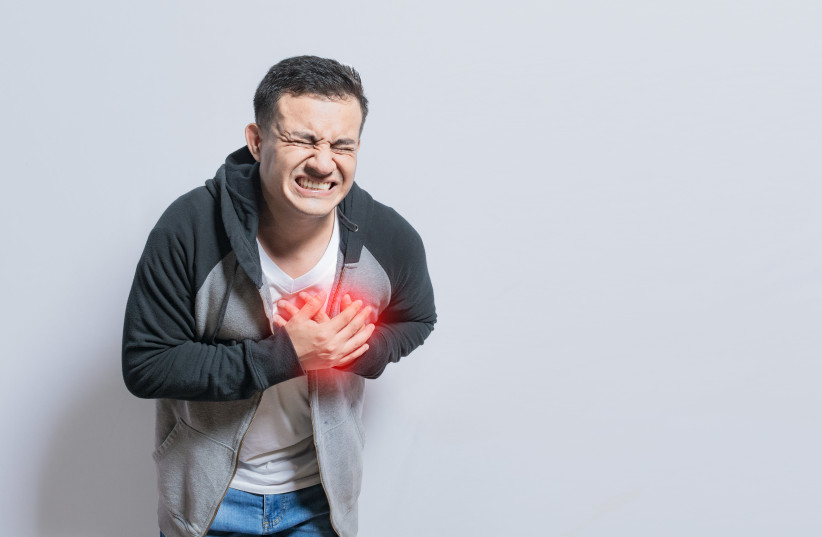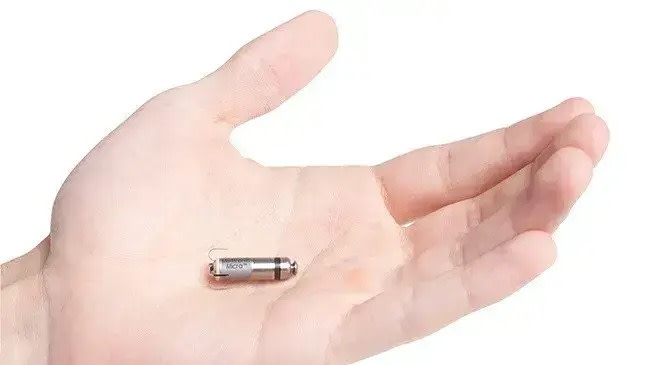Heart diseases are a leading cause of death in Western societies, including Israel. In the United States, someone succumbs to cardiovascular disease every 33 seconds. Globally, an estimated 620 million people battle heart disease, and this number is expected to rise in the coming years. On this International Heart Disease Awareness Day, let's delve into this critical issue.
Understanding the heart's vital role
The heart, our essential muscular organ, serves as the central blood pump of the body. It tirelessly beats, circulating blood throughout our tissues and muscles. At rest, the heart contracts between 60 and 80 times per minute, propelling blood through the aorta to nourish all body organs. It delivers oxygen and nutrients while eliminating carbon dioxide and waste products.
The heart consists of four sections: two chambers and two atria. These chambers efficiently transport blood from the upper atria to the lower chambers for onward distribution. An intricate electrical conduction system regulates the heart's rhythm, ensuring it beats consistently and effectively. This system triggers the atria's contraction slightly before the ventricles, allowing blood to fill them before they, too, contract, propelling blood onward. During excitement or physical exertion, the heart's pace increases, slowing down during rest.
Similar to other organs, the heart requires oxygen-rich blood, supplied through coronary arteries branching into an intricate network, sustaining the heart's optimal function.
The escalation of atrial fibrillation
Atrial fibrillation, commonly known as "atrial fib," is a prevalent heart rhythm disorder, with its prevalence increasing with age. Fibrillation results from electrical disturbances in the atria, causing them to beat rapidly and irregularly, often exceeding 300 beats per minute. This irregular electrical activity manifests as an erratic pulse and unsettling chest sensations.
Atrial fibrillation disrupts normal blood flow and elevates the risk of blood clot formation within the left atrium, a condition that can lead to strokes. Managing atrial fibrillation entails blood-thinning to prevent clot formation and controlling rapid heart rates to alleviate chest discomfort. Treatment may involve medications for heart rate regulation or electrical cardioversion to restore a normal rhythm via electric shocks. In some cases, electrical catheterization can be performed, cauterizing problematic areas in the left atrium, effectively treating and preventing atrial fibrillation recurrences.
Deciphering the heart attack
A heart attack, medically termed myocardial infarction, occurs when a portion of the heart muscle doesn't receive adequate oxygen-rich blood due to the narrowing or blockage of a coronary artery—the vessels supplying the heart. This blockage arises from atherosclerosis, a condition in which cholesterol and smooth muscle cells accumulate within artery walls, gradually constricting blood flow.
Both men and women face the risk of atherosclerosis and heart attacks, although symptoms may differ. Men commonly experience chest pressure, pain, shortness of breath, and sweating. Women, too, may feel chest pressure but often describe discomfort in the neck, shoulders, upper back, or stomach. Men are generally affected at a younger age than women.
Several types of heart attacks exist, with severe cases marked by complete blockage of a major heart artery, causing intense chest pains and profuse sweating. Immediate hospitalization and urgent cardiac catheterization are essential to unblock the affected artery. In cases of significant artery narrowing, chest pain typically arises during exertion, sometimes even at rest. Swift hospitalization is critical, where a decision is made to proceed with catheterization or treat solely with medication.
In both scenarios, reduced blood flow to the heart muscle can result in severe damage, leading to decreased heart function, heart failure, or cardiac arrest, posing fatal risks. Therefore, when experiencing unsettling chest pains or new discomfort during exertion, it's advisable to contact a medical center or call Magen David Adom for prompt transportation to the hospital.
Regrettably, some patients attempt to reach the hospital independently when feeling unwell. In such cases, it is crucial not to use a private vehicle but to rely on rescue agencies, who can swiftly and safely transport patients for appropriate treatment, even administering treatment en route when necessary. The rapid response of medical teams equipped with defibrillators can be lifesaving during resuscitation emergencies.
How does Catheterization work?
During the catheterization procedure, a cardiologist assesses the health of the coronary arteries, which supply oxygenated blood to the heart muscle. To simulate the heart's arteries, a catheter (a specialized thin tube) is inserted through an artery in the hand or leg and advanced through the aorta to the coronary artery exit. Contrast material is injected through the catheter, allowing for X-ray imaging of the arteries from different angles. If a blockage or narrowing of the coronary arteries, often due to arteriosclerosis, is identified, the diseased area can be treated during the therapeutic phase of catheterization. Initially, the location of the blockage is identified, followed by the therapeutic phase in which a very thin specialized metal wire is passed through the catheter. The wire is navigated through the blockage, allowing the cardiologist to pass a balloon over it to expand the stenosis. If necessary, a drug-coated stent may be implanted in the stenotic area. This stent helps keep the artery open, and the medication on it treats the diseased area over several weeks, promoting recovery.
After catheterization, patients are advised to take several medications, including antiplatelet drugs to prevent blood clot formation in the treated areas, and statins to lower cholesterol levels and reduce and stabilize atherosclerosis. It's crucial to adhere to this medication regimen, as discontinuing it may increase the risk of another cardiac event.

Heart failure
Heart failure is a condition in which the heart fails to adequately supply blood to meet the body's needs. This can result from various causes, such as a heart attack that damages part of the heart muscle and impairs its function, inflammation of the heart muscle, or other underlying diseases. Individuals experiencing heart failure typically report difficulty performing daily activities like climbing stairs or completing household chores. Common symptoms include weakness, fatigue, and a lack of energy. Edema, the accumulation of fluid due to the heart's inability to pump effectively, may also develop.
There are several types of heart failure:
1. Heart failure with reduced ejection fraction, which can manifest as either left or right heart failure. Left heart failure results from dysfunction in the left side of the heart, responsible for distributing blood to various parts of the body. Reduced left ventricular contractility leads to decreased cardiac output and fluid accumulation in the lungs, resulting in shortness of breath. This condition is often chronic. In acute situations where blood volume in the pulmonary vessels suddenly increases, pulmonary edema, characterized by severe shortness of breath, can occur. In contrast, right-sided heart failure arises from reduced right heart contractility and impairs blood flow from the heart to the lungs. It primarily manifests as swelling (edema) in the legs and abdomen due to blood accumulation in the body's veins.
2. Heart failure with preserved ejection fraction (previously referred to as diastolic failure) is a common condition characterized by a stiff heart muscle that, while contracting normally, fails to relax and receive blood efficiently from the body. This condition is often seen in patients with high blood pressure and may also have other causes. The stiff heart muscle elevates blood pressure within the heart chambers, leading to pulmonary congestion, exertional shortness of breath, and leg edema.
The primary treatment for heart failure involves medication, typically a combination of drug classes such as renin-angiotensin system inhibitors, beta-blockers, and, more recently, SGLT2 inhibitors. SGLT2 inhibitors promote urine excretion, reducing fluid overload and edema, lowering blood pressure, and alleviating stress on the heart and kidneys. These medications improve symptoms, reduce hospitalizations, and enhance patient survival. In addition to medication, various devices like pacemakers can improve coordination between the heart's ventricles or treat arrhythmias. In cases of significant heart valve leakage accompanying severe heart failure, catheter-based procedures can repair the valve. For extremely severe heart failure, either a human or artificial heart transplant may be necessary.
Inflammation of the Pericardium
Inflammation can affect the heart muscle itself or its protective sheath called the pericardium. The pericardium is a connective tissue layer that surrounds and safeguards the heart, separating it from other chest organs. Pericarditis is a relatively common condition that can occur even in young individuals and is often caused by various viral infections. Symptoms of pericarditis include chest pain that worsens with deep breaths or lying down, improved with sitting; fever; general malaise; and more. In most cases, pericarditis resolves within a week or two with proper treatment, leaving no lasting damage to the heart. Occasionally, recurrent or chronic inflammation may necessitate extended treatment, which typically involves higher doses of anti-inflammatory drugs and the addition of colchicine to prevent recurrence. In some instances, more potent anti-inflammatory medications may be recommended by physicians.
Pacemaker implantation
Various diseases can disrupt the heart's electrical conduction system, leading to a slowdown or blockage of electrical signals that coordinate heart chamber contractions. In some cases, this disruption can cause dangerously low heart rates. In such situations, pacemaker implantation becomes necessary to maintain a normal heart rhythm. A pacemaker is a device implanted beneath the skin on the chest, with electrodes extending to different areas of the heart muscle. The pacemaker continuously monitors heart rate and intervenes when it detects irregularities in the heart's conduction system. Various types of pacemakers are available, and expert physicians select the appropriate one based on the specific conduction disorder. Notably, former Prime Minister Benjamin Netanyahu recently received a pacemaker implant.

What can you do to protect your heart?
Preventing or reducing the risk of various heart diseases hinges on maintaining a healthy lifestyle and meticulously managing risk factors associated with atherosclerosis. Key preventive measures encompass addressing modifiable risk factors, such as smoking, obesity, and underlying conditions like diabetes and hypertension.
It is of paramount importance to adhere to a wholesome and well-balanced diet while also managing your weight effectively. Reducing your consumption of foods high in sodium, sugar, and saturated fat is imperative. Additionally, engaging in regular exercise, at a minimum of twice a week, and abstaining completely from smoking are strongly recommended. For individuals who have been diagnosed with diabetes, hypertension, or high cholesterol, it is crucial to consult with their family doctor or a cardiologist for a comprehensive medical evaluation and to receive the most up-to-date medical recommendations.
Lastly, it is essential not to take these precautions to heart.
Dr. Eyal Ben-Assa, an esteemed expert in cardiology and cardiac catheterization, currently serves as the director Director of the Structural Heart Disease at Assuta Ashdod University Hospital.
